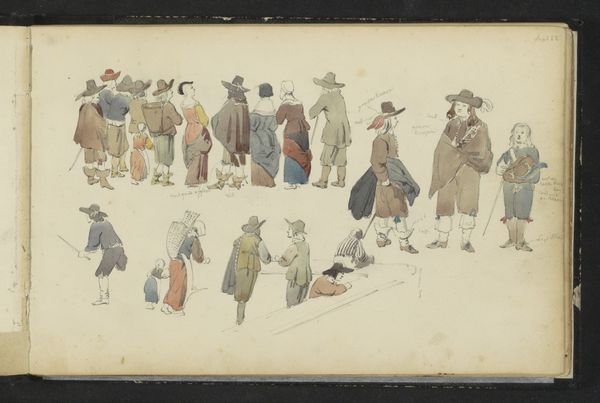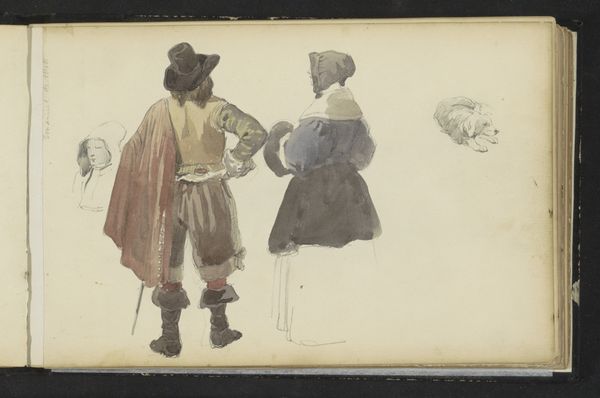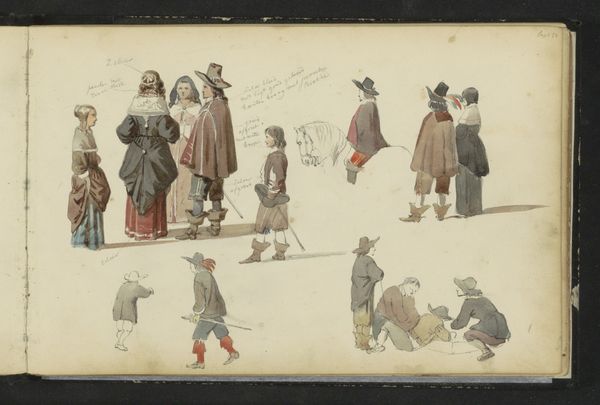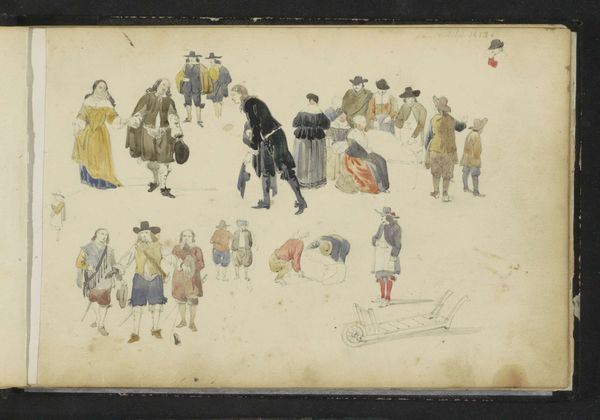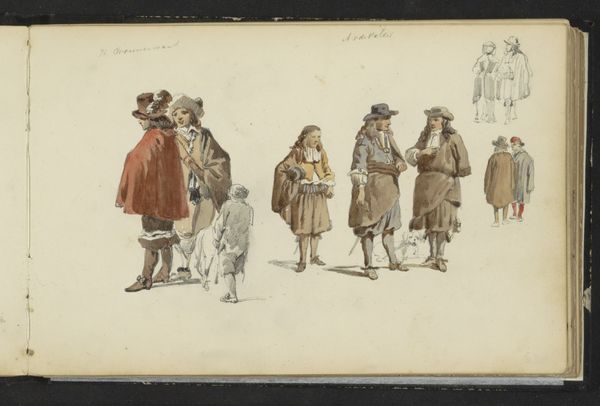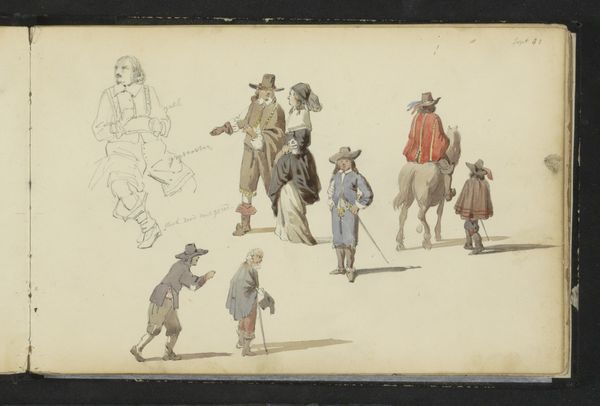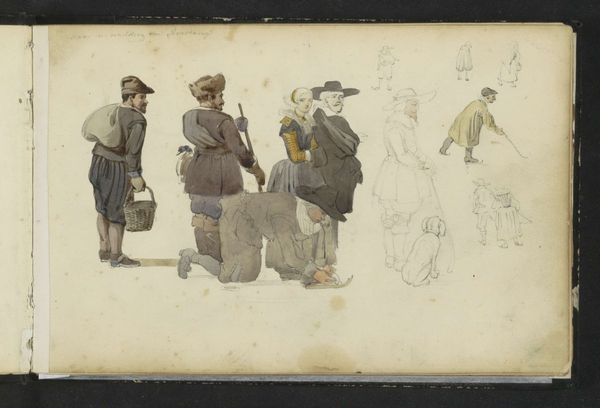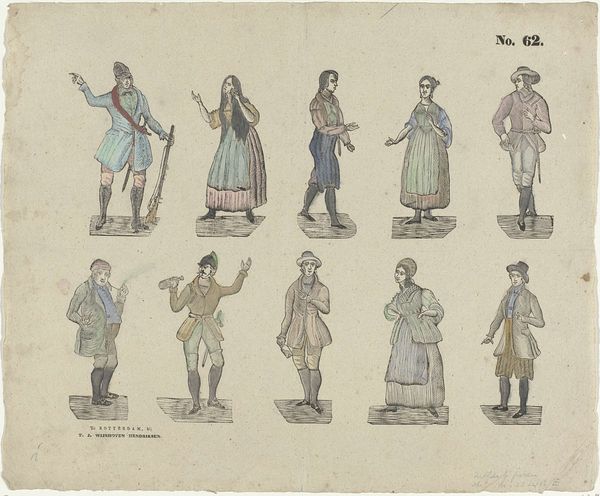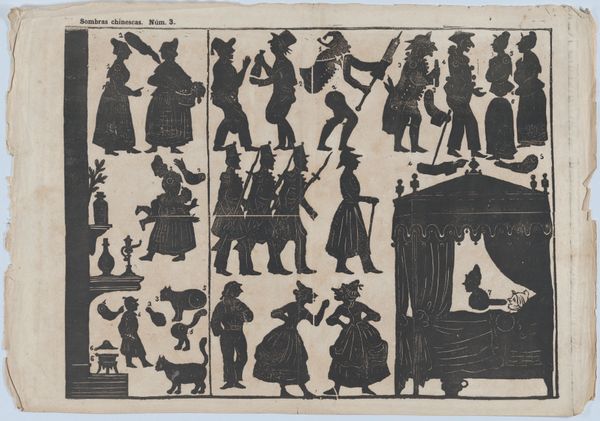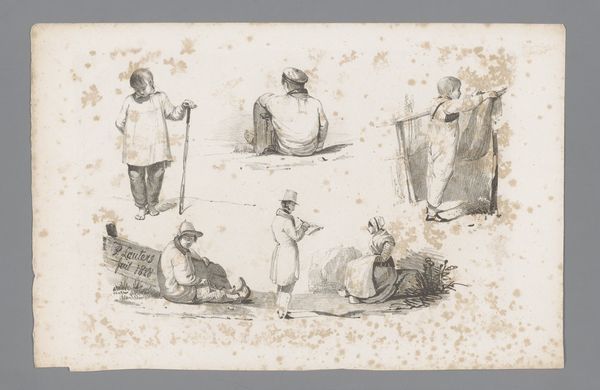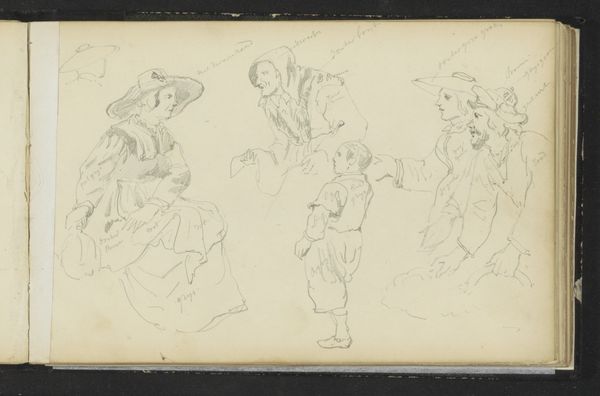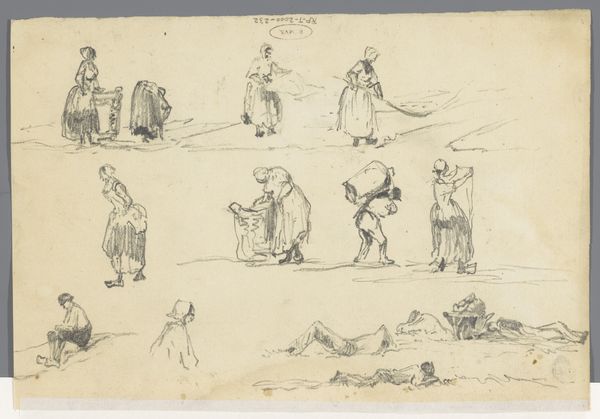
drawing, paper, watercolor, ink, pencil
#
drawing
#
dutch-golden-age
#
figuration
#
paper
#
watercolor
#
ink
#
coloured pencil
#
pencil
#
genre-painting
Copyright: Rijks Museum: Open Domain
Curator: Well, here we have Cornelis Springer's "Mannen in zeventiende-eeuwse kleding," a drawing made between 1852 and 1859. It’s currently held in the Rijksmuseum. Editor: It's a collection of sketched figures on paper, in ink, watercolor and pencil. The immediate impression is almost theatrical. Like costume studies for a play. Curator: That’s perceptive. Springer was fascinated by history and often depicted scenes from the Dutch Golden Age. This drawing shows studies of figures in clothing of that era, acting as memory of a foundational time. The costume functions as cultural artifact. Editor: Looking closer, I’m struck by how he captures the texture and weight of the fabrics with such economical lines. Notice the contrast between the sharp detail in the hats and the more loosely rendered cloaks. Semiotically, the arrangement itself is quite interesting: some characters facing forward while others turn to reveal the garments on their back. Curator: Precisely. The clothing tells a story. The high hats suggest affluence or a certain social status. It evokes memories of a hierarchical society, a very important memory within Dutch society to this day. It suggests the complexities of life during that time. It also recalls archetypes of justice and inequality still familiar in modern Dutch life. Editor: And the limited palette focuses us on form rather than surface ornamentation. The arrangement on the page seems informal, almost like notes. Perhaps it functions more like a catalog than a unified tableau. But this too becomes symbolic as the men are not frozen within an immutable landscape, but rather mutable and nomadic across the landscape of the page itself. Curator: An insightful consideration! His study becomes a cultural mirror, showing aspects of class and bearing. We project what we know and who we believe these individuals to have been in reality based only on attire. These historical memories carry through his works. Editor: Indeed, I came in thinking of garments and form, but now my gaze is refocused by how artfully Springer renders these traces, the interplay of materiality and visual narrative. Curator: And my viewing now reveals a deep understanding of a cultural continuity that persists over time within Dutch identity and history, one where costume carries more value than simple adornment.
Comments
No comments
Be the first to comment and join the conversation on the ultimate creative platform.
